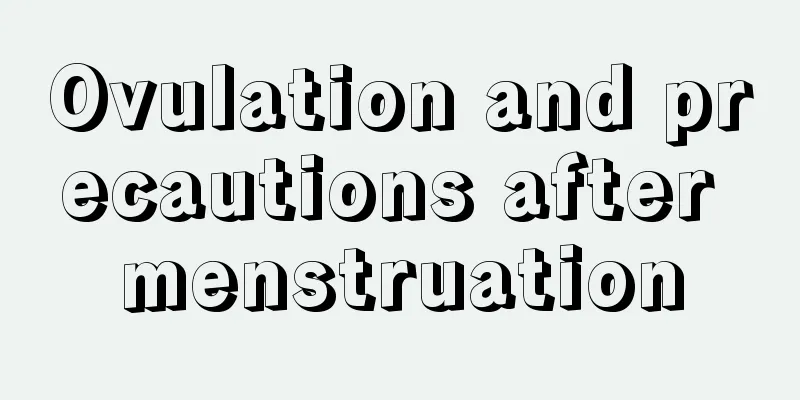When menstruation is due, it does not come

|
Many women often encounter this problem in their daily lives: their menstruation has not come on the day it should, and is delayed for several days. This can be very distressing, because they hope that their menstruation will not come, but they feel very panicked when it does not come. This is a case of delayed menstruation, which may be related to many reasons and needs to be identified before it can be treated.
1. Pregnancy You can use the "Early Pregnancy Test Strip" to test your urine 7 days after your period is delayed. If the result is positive, you are very likely pregnant. If the result is negative, then vice versa. But if you are pregnant, there will be other symptoms such as nausea, breast tenderness, etc. Of course, the last resort is to go to the hospital for an ultrasound examination. 2. The effect of the drug Endocrine disorders after long-term use of contraceptives can also cause delayed menstruation. Doctors also found, based on patient feedback, that a new generation of gastric motility drug, metoclopramide, also known as domperidone, may also cause this condition. Since metoclopramide does not easily cross the blood-brain barrier, it is believed that it has no inhibitory effect on central dopamine receptors. Central dopamine receptors are inhibited, resulting in a decrease in the amount of hypothalamic release factors entering the anterior pituitary. As a result, the anterior pituitary secretes less gonadotropin and corticotropin, leading to amenorrhea and delayed ovulation.
Intrauterine surgery can cause cervical adhesions, which can lead to menstrual blood stasis and thus delay menstruation. 4. Others Psychological factors such as mental tension, stress, environmental changes, and some diseases that affect the endocrine system. Can cause delayed menstruation. Expert tip: If menstruation is delayed only 1-2 times occasionally and there are no other accompanying symptoms, it does not fall into the category of menstrual disorders. When the interval between menstrual cycles is more than 35 days, it is called oligomenorrhea, and when menstruation stops for more than 3 menstrual cycles, it is called amenorrhea. The absence of ovulation after amenorrhea can also lead to problems such as osteoporosis and endometrial hyperplasia, which must be taken seriously. You should go to the hospital immediately for a comprehensive examination. |
<<: Feeling that menstruation is not coming
>>: How to make menstruation flow smoothly
Recommend
What to eat in summer to enlarge breasts
The weather is quite hot in summer, so many peopl...
A drop of blood in early pregnancy
"It's bleeding!" The husband rushed...
Vaginal pain during menstruation
Vaginal pain during menstruation is also a very c...
How to make labia pink? Do this to restore women's confidence
Women's labia will gradually turn darker over...
Can girls eat pineapple when they have their period?
After the menstrual period, women must adjust the...
How much does hysteroscopic surgery cost?
Through hysteroscopic examination, the internal e...
What are the quick solutions for constipation in pregnant women?
I believe that many people have had similar exper...
There is a small pimple on my lower body
A small lump grows under the vagina of female fri...
Is the mixed test for nucleic acid testing done by gathering people for testing? Is there any difference between the test reports for mixed testing and individual testing?
In order to prevent the spread of the epidemic, e...
Pretentious, emotionally unstable? No! Stop scolding! We are just sensitive to order...
We all live with social evaluations and are influ...
Will girls gain weight if they often stay up late?
Will girls get fat if they stay up late? Staying ...
How to avoid pregnancy
When women use contraception, they also need to c...
Tencent Space: Top 10 New Year's Wishes of QQ Space Users in 2012 - Data Infographic
Top 10 wishes of QQ space users in 2012 According...









